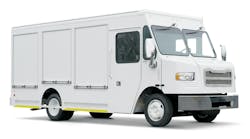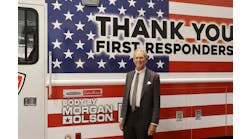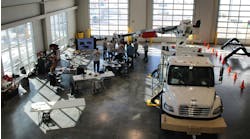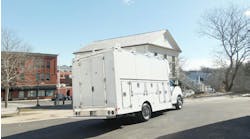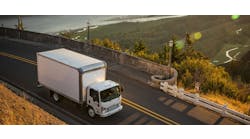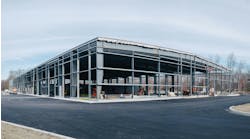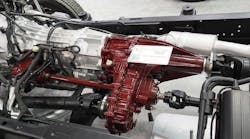Vocational vehicles are designed to handle many unique tasks and come with a multitude of auxiliary equipment and support. The key question becomes what works best for operations. Many variables need to be considered before a fleet professional can offer a recommendation or even think about starting the work truck design process. Historically, in Classes 2–5, auxiliary power export options have been mainly limited to a belt-driven provision off the engine and under the hood. As automatic transmissions advance, many are turning to power takeoff (PTO) as a viable alternative. With the addition of PTO, numerous auxiliary options have become available to the vocational truck market.
A starting point
Understanding design constraints is the most critical aspect. Begin by defining the truck’s desired functionality, operating conditions, drive/duty cycles and environmental conditions. Secondly, identify what types of auxiliary equipment are going to be powered. Determine if you require air, hydraulic or a combination of the two. Lastly, it may be financially beneficial to plan for future demands on the truck. Specification writers don’t always anticipate a change in job requirements, which would be a minor cost increase at present versus a more expensive future retrofit. A common example involves dump trucks repurposed with snowplow functionality. Designing a vehicle with central hydraulics could have greatly reduced retrofit cost from the beginning. This is not always possible due to budget constraints and other unknown factors. With this knowledge and a little bit of forethought, you can determine what’s best for your operation. For either alternative, the answer can be complicated. It’s a good idea to think through the implications surrounding:
- System output (power of an underhood solution versus the PTO alternative)
- Space the solution requires of your vehicle
- Weight considerations as each add-on diminishes effective payload
- Maintainability
- Cost
Defining demand and controlling costs
Everyone wants a vocational vehicle versatile enough to accomplish almost any task; however, this is not financially practical. Understanding demand can save you money in the long run. Thinking about onboard air solutions, the required pressure and volume will dictate the best type of compressor and, ultimately, how much power is required. Engine-driven compressors are typically most cost-effective for low- to mid-volume requirements (usually 20–90 cubic feet per minute). Larger compressors often carry higher upfront costs as compared to PTO solutions. However, be sure to consider the big picture, including available options from OEM and aftermarket component suppliers. When looking at other auxiliary equipment (such as hydraulic solutions), you can follow the same exercise. When reviewing hydraulic options for a dump bed or snowplow, depending on the duty cycle required, it may be beneficial to look at self-contained electric units that provide hydraulic operations at the point of use (such as a lift cylinder). Oftentimes, this can be very cost-effective and simplify truck design. More complex power requirements (like a large generator or other equipment with a driveshaft) will need a PTO provision and an additional gearbox.
Avoiding mistakes
As mentioned, foresight is vital to getting the best solution at the most economical price. Vehicle maintainability, especially related to component locations, is key to selecting the best fit. Each additional auxiliary component could potentially influence maintainability of a work truck and the component itself. Accounting for space on board and understanding applicability of available solutions help ensure a good selection that gives you the output required to meet your needs with the right capacity balance. Items like generators, cranes and welders may physically intrude on limited space. Another common mistake is simply relying on what’s been done historically. Technology continues to advance; new options are constantly hitting the market. It is important to examine all advantages of new product offerings rather than assume the traditional option is, in fact, the best solution. Taking the time to analyze work environments, challenges, and actual demands positions you, as a fleet professional, to make the right choice.
Real-world perspective
It may prove helpful to consider a practical application. For example, external power export solutions have come a long way from a standalone gas or drive shaft-driven generator. One solution for worksite power management may be partially integrated into a truck you’ve already designed (or plan to take into account). A hydraulic generator is one answer; the concept is similar to the gasoline-powered standalone counterpart, but it’s more compact and versatile. These generators can be specified or retrofitted into existing work trucks with hydraulic circuits. Without the gasoline power plant, size and weight can be reduced by 50 percent. In terms of maintenance costs, there are no gasoline engines to support and fewer environmental factors. Considering these dynamics demonstrates the importance of looking at the big picture and evaluating alternative solutions to minimize additional auxiliary equipment needs, maintenance issues and operating costs.
Learn more
NTEA offers fleet managers access to publications and reference materials on current regulations, safety standards, and other technical issues at ntea.com. To learn more about the tools, resources and solutions available exclusively to members, visit ntea.com/memberbenefits.
Green Truck Association (GTA), an NTEA affiliate division, offers a variety of resources to educate its members on techniques and technology that can improve fleet efficiency, reduce emissions across time, and lower the risk of fuel price volatility driving up operating expenses. GTA fleet members can get involved in a data logger drive and duty cycle program that provides information on how vehicles operate in varying environments; find details at greentruckassociation.com.
